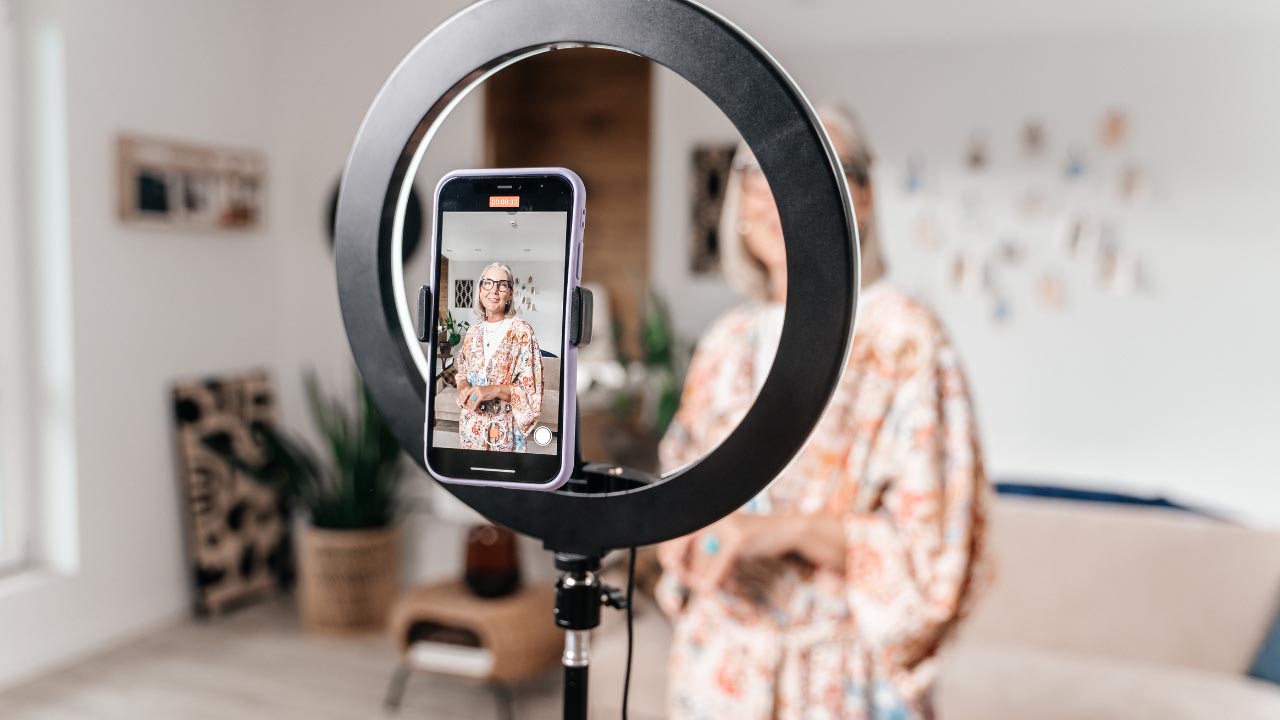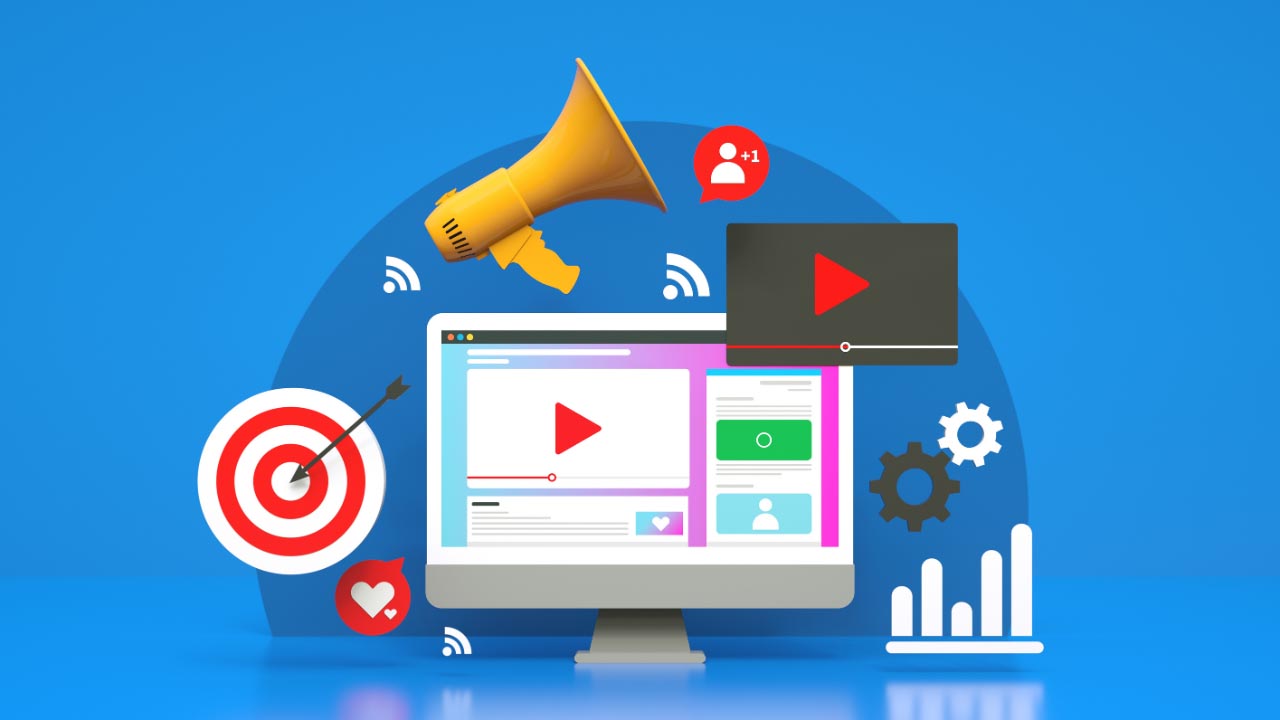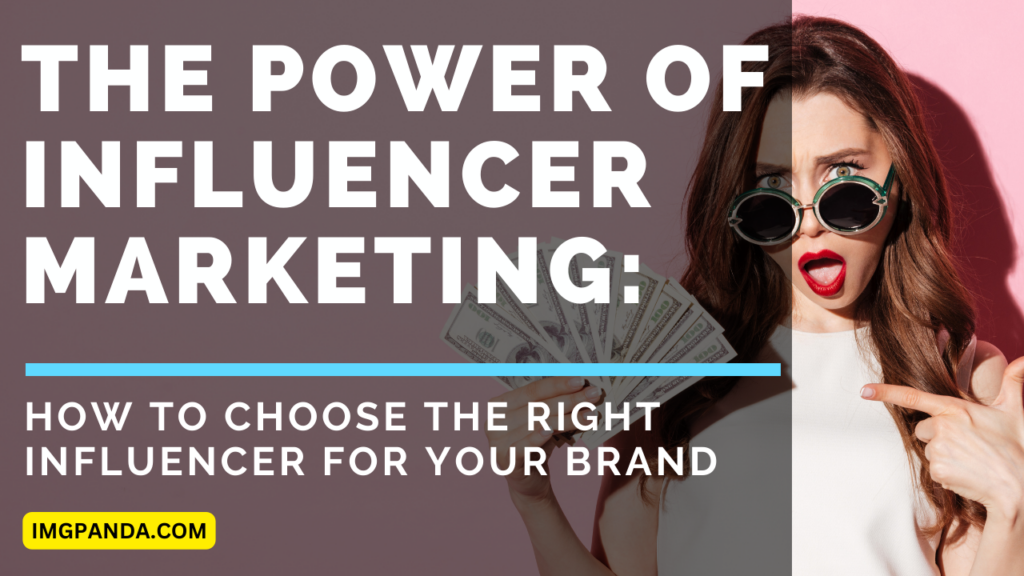Introduction
Influencer marketing has become a buzzword in the marketing world, and for good reason. Collaborating with influencers can help brands reach a wider audience and build trust with their target consumers. However, not all influencers are created equal, and choosing the right one for your brand is crucial for the success of your campaign.
In this blog post, we'll explore what factors you should consider when selecting an influencer, where to find them, how to reach out and manage influencer relationships, as well as provide examples of successful influencer marketing campaigns. Whether you're new to influencer marketing or looking to improve your strategy, this guide will help you choose the right influencer for your brand.
Also Read This: Canva Color Addition to Image
What to Consider When Choosing an Influencer
When choosing an influencer to partner with, there are several factors to consider. These include:
Relevance to your brand and target audience:
The influencer you choose should align with your brand and be able to reach your target audience. For example, if you're a fitness brand targeting women, you may want to collaborate with a fitness influencer who has a predominantly female following.
Engagement and audience size:
It's not just about the number of followers an influencer has; you should also consider their engagement rate and how active their audience is. Look at their comments and likes to see if their followers are engaged and responsive.
Authenticity and credibility:
You want to work with influencers who are genuine and authentic in their content and who have built a level of trust with their audience. Look for influencers who have a history of creating quality content that aligns with their values.
Values and personality fit:
Choose influencers whose values and personality align with your brand. If your brand is known for being environmentally friendly, you may want to work with an influencer who promotes sustainable living.
Rates and budget:
Influencer rates can vary widely depending on their level of influence, the scope of the campaign, and other factors. Make sure you have a clear understanding of what you can afford and negotiate a fair rate for their services.
By considering these factors, you can ensure that the influencer you choose is the right fit for your brand and campaign goals.
[caption id="attachment_182912" align="alignnone" width="1280"] What to Consider When Choosing an Influencer[/caption]
What to Consider When Choosing an Influencer[/caption]
Also Read This: How to Create an Apple ID for Free in Pakistan
Where to Find Influencers
There are several ways to find influencers for your brand:
Social media platforms:
Instagram, YouTube, and TikTok are popular social media platforms where influencers can be found. You can use their search function or hashtags related to your brand to find influencers.
Influencer marketing platforms:
There are several influencer marketing platforms, such as AspireIQ, Upfluence, and Grin, that connect brands with influencers. These platforms offer a range of services, such as influencer discovery, campaign management, and analytics.
Google search:
You can also search for influencers on Google by using relevant keywords related to your industry. This can lead you to influencers who are not necessarily on social media or listed on influencer marketing platforms.
Industry events:
Attend industry events and conferences to meet and network with influencers in your niche.
Referrals:
Reach out to colleagues, partners, or even customers to get recommendations for influencers they have worked with or follow.
Whichever method you choose, make sure to do your research and evaluate each potential influencer based on the factors mentioned earlier to ensure they are a good fit for your brand.
[caption id="attachment_182913" align="alignnone" width="1500"] Where to Find Influencers[/caption]
Where to Find Influencers[/caption]
Also Read This: Cutting the 123RF Sign from a Photo: Step-by-Step
How to Reach Out to Influencers
When reaching out to influencers, it's important to make a good impression and communicate clearly. Here are some tips for reaching out to influencers:
Personalize your message:
Address the influencer by name and mention why you think they would be a good fit for your brand. This shows that you have done your research and are genuinely interested in working with them.
Be clear about your offer:
Explain what you are offering and what you expect in return. This includes details such as compensation, deliverables, and timeline.
Be respectful of their time:
Influencers are busy people, so be respectful of their time by keeping your message concise and to the point. Avoid sending lengthy emails or messages that may be overwhelming.
Follow up:
If you don't hear back from an influencer, don't be afraid to follow up politely. They may have missed your initial message or may need more information before making a decision.
Build a relationship:
Influencer partnerships can be long-term, so it's important to build a relationship with them. Show your appreciation for their work and consider offering them exclusive perks or promotions to maintain the relationship.
Remember that influencers receive many partnership requests, so make sure your message stands out and provides value to them. By following these tips, you can increase your chances of successfully reaching out to influencers.
[caption id="attachment_182914" align="alignnone" width="1280"] How to Reach Out to Influencers[/caption]
How to Reach Out to Influencers[/caption]
Also Read This: How to Create My Own Channel on Dailymotion
Managing Influencer Relationships
Managing influencer relationships is essential to a successful influencer marketing campaign. Here are some tips for managing influencer relationships:
Set clear expectations:
Before starting the campaign, make sure to set clear expectations for both parties. This includes details such as deliverables, timeline, compensation, and communication expectations.
Keep communication open:
Regular communication is key to maintaining a good relationship with influencers. Keep them updated on campaign progress and be open to their feedback and suggestions.
Be flexible:
Influencers may have their own ideas on how to promote your brand, so be open to their suggestions. This can help to create more authentic and engaging content.
Provide support:
Offer support to influencers by providing them with the resources they need to create great content. This can include product samples, talking points, and access to your brand's social media channels.
Track and measure results:
Track and measure the results of your influencer campaign to evaluate its effectiveness. This includes metrics such as engagement, reach, and sales. Use this data to improve future campaigns and optimize your influencer relationships.
By following these tips, you can build strong relationships with influencers and create successful influencer marketing campaigns that benefit both your brand and the influencer.
[caption id="attachment_182916" align="alignnone" width="1280"] Managing Influencer Relationships[/caption]
Managing Influencer Relationships[/caption]
Also Read This: A Guide to Red Cherry Images on ShootProof
Examples of Successful Influencer Marketing Campaigns
Here are a few examples of successful influencer marketing campaigns:
Daniel Wellington:
Daniel Wellington is a Swedish watch company that partnered with influencers to promote their products on social media. They worked with micro-influencers, particularly on Instagram, who shared photos of themselves wearing Daniel Wellington watches and offered discount codes to their followers. The campaign was a huge success and helped to grow the brand's social media following and increase sales.
Glossier:
Glossier, a beauty brand, has built its success through social media marketing and influencer partnerships. They have a team of "Glossier reps" who are influencers with a large following on Instagram. These influencers promote Glossier's products on their Instagram feeds and offer their followers discount codes. The company also encourages user-generated content by reposting photos from customers who tag them on social media.
Pepsi:
Pepsi launched a successful influencer marketing campaign for their Max Zero sugar drink in the UK. They partnered with well-known influencers and created a challenge for them to take a "Pepsi Max Challenge" where they blind taste-tested Pepsi Max against other leading soda brands. The influencers then shared their experiences on social media, which helped to generate buzz and promote the product.
American Express:
American Express worked with influencers to promote their Small Business Saturday campaign, which encouraged people to shop at small businesses on the Saturday after Thanksgiving. They partnered with influencers who were passionate about supporting small businesses and who shared their experiences on social media. This helped to raise awareness of the campaign and generate interest in small businesses.
These examples demonstrate how influencer marketing can be a powerful tool for brands to reach new audiences and increase sales. By partnering with the right influencers and creating engaging content, brands can create successful influencer marketing campaigns that benefit both their brand and the influencers.
[caption id="attachment_182917" align="alignnone" width="1280"] Influencer Marketing Campaigns[/caption]
Influencer Marketing Campaigns[/caption]
Also Read This: Watching the Super Bowl on YouTube TV – What You Need to Know
Pros and Cons of Influencer Marketing
| Pros | Cons |
|---|---|
| 1. Reach a large and targeted audience | 1. High costs for working with popular influencers |
| 2. Build trust and credibility with customers | 2. Difficulty measuring ROI and success of campaigns |
| 3. Increase brand awareness and recognition | 3. Risk of influencers damaging brand reputation |
| 4. Gain access to new markets and demographics | 4. Difficulty finding the right influencers for your brand |
| 5. Opportunity for user-generated content | 5. Lack of control over influencer content and messaging |
| 6. Potential for long-term partnerships |
This table highlights some of the benefits and drawbacks of influencer marketing. While influencer marketing can be a powerful way to reach new audiences, build credibility, and increase brand awareness, it also has some potential drawbacks, such as high costs, difficulty measuring ROI, and the risk of damage to brand reputation. Brands must carefully weigh the pros and cons of influencer marketing before embarking on a campaign to ensure it aligns with their goals and resources.
"Influencer marketing has the ability to reach new audiences in a way that traditional advertising cannot. By partnering with influencers who have built trust and credibility with their followers, brands can leverage their influence to increase brand awareness, drive engagement, and ultimately drive growth for their business." - Shane Barker, Digital Strategist and Influencer Marketing Expert.
Also Read This: Understanding How Heart Attacks Occur with a Dailymotion Video Explanation
Conclusion
Influencer marketing has become a popular and effective way for brands to reach new audiences, build trust and credibility, and increase brand recognition. However, with the growing popularity of influencer marketing, it's becoming increasingly important to choose the right influencer for your brand, develop a strong relationship with them, and carefully monitor their content to ensure it aligns with your brand's messaging and values.
By considering factors such as the influencer's audience demographics, engagement rates, and overall brand alignment, you can select an influencer who will be a good fit for your brand and help you achieve your marketing goals. Additionally, by carefully managing your influencer relationships, monitoring their content, and measuring the success of your campaigns, you can ensure that your influencer marketing efforts are effective and beneficial for your brand.
While influencer marketing does have its challenges, it can be a powerful tool for brands looking to connect with new audiences and increase their brand recognition and trust. With careful planning, execution, and evaluation, influencer marketing can help you achieve your marketing goals and drive growth for your business.
FAQs
What is influencer marketing?
Influencer marketing is a form of marketing that involves partnering with social media influencers to promote a brand or product to their followers.
How do I choose the right influencer for my brand?
When choosing an influencer, consider factors such as their audience demographics, engagement rates, and overall brand alignment. Look for influencers whose values and content align with your brand's messaging and goals.
Where can I find influencers to partner with?
There are a variety of platforms and tools available to help you find influencers, such as influencer marketing agencies, social media platforms, and influencer databases.
How do I reach out to influencers?
When reaching out to influencers, personalize your outreach and clearly communicate the value of the partnership. Be prepared to negotiate compensation and be respectful of the influencer's time and priorities.
How do I measure the success of my influencer marketing campaigns?
To measure the success of your campaigns, track metrics such as engagement rates, reach, and conversions. Use these metrics to evaluate the ROI of your campaigns and make data-driven decisions for future campaigns.
